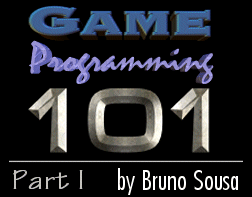11/10 - 11/12 @ Montréal, Canada
12/5 - 12/7 @ Shanghai, China
12/24 - 12/27
2/28 - 3/4 @ San Francisco, CA
More events...
2406 articles in the reference section.
Help us fight cancer!
Join SETI Team GDNet!

|
The very beginningAs you well know by now, any game developer that wants to have a future should know at least the basics of DirectX. Sure there are other options like OpenGL for graphics or the new OpenAL for audio, but at the present moment the industry standard is DirectX and so, that is what we are going to use. You’ll need a compiler that is capable of generating Win32 executables (this series will feature Visual C++ 6.0, but you can use any other compiler) and you will also need the DirectX SDK (we’ll use version 7.0 since it is the most current version of it). You can download or order the DirectX SDK at the Microsoft DirectX SDK homepage.
The first game we’ll develop will be a Pong clone. You can take many approaches to develop a game, the one that will be presented here is the one I like, but if you prefer working in another manner (like first code the wrappers and then design, etc) it’s your call. I stick with this one because I got used to it during my apprentice time. The approach I take to program any game is given below:
These are the steps I prefer to use to develop my games; if you have your own, fine stick with it. Also a note: the term test bed usually refers to using a pencil and paper, toys, and/or programs to test an idea. I use the term test bed as part of a feature or engine, like text output, scrolling functions, and the save/load mechanism. I prefer to develop these features in a of separate program and then integrate it with the game. This system is also known as the tier system, I call it test bed - the important thing is that even though names differ the concepts are the same. |
||||||||||||||||||||
|
|
||||||||||||||||||||